Vintage Recipe Roulette: 1954 Baked Bean Yankee Doodle Pizza
If you have fond memories of summer camp mystery meals, I have good news for you
I often say that while I like a lot of foods, pizza is the only thing I really love. I’d like to thank today’s experimental recipe for showing me the limits of my capacity for unconditional love, because after assembling the ingredients, I have a serious case of the cold feets.
It’s a bit hard to read after so many digital copies, but you can see a photo of an original page here, and it says it’s from 1954. You take a can of refrigerated biscuits, a can of pork and beans (other versions called for plain old baked), a can of spaghetti sauce (not a typo), and a can of tomato paste, and assemble them into pie-shaped devilry.
The cheese is such an afterthought that I can’t fault it for participating.
This scourge upon humanity is from the Ann Page brand, which was a store brand label for A&P grocery stores. It was actually starting to limp a bit by the time this recipe was summoned concocted. While one would be forgiven for thinking this recipe was why, there were a lot of market forces. There’s a great history from Groceteria here, but in short, they started in the mid-1800s as a tea company, shifted to groceries, made it through the 30s but took a hit, did well into the 50s, but then never made the shift to the post-war suburban market. Although it was sold off several years ago, Eight O’Clock coffee is one other A&P label you may have heard of. Ann Page was out by the 90s, and alas, the last A&P closed in 2016.
Many of us may think of canned biscuits as a 1960s and 70s thing, but they were actually patented in the 1930s by Lively B. Willoughby of Bowling Green, KY. They were hard to extract from the tube, though, until they started making the kind that pop open with enough force to cause a water buffalo stampede should some indelicate camper choose the wrong venue for breakfast prep. You can read about the difficulties in manufacturing packaging just incorrectly enough that it fails right when you want it to and not a moment before on the Erdie Industries history page, but I think the most important info there is the patent illustration, which clearly shows that the right way to open canned biscuits is to smack it on the counter. None of this “press with the back of a spoon” silliness.
As for the history of pizza, although it’s often maintained that pizza is American, that’s an oversimplification at best. The word is from the same root as “pita” and referred to a lot of disc-shaped wheat flour-based things on both sides of the pond, as Gastro Obscura explains, and the cheesy tomato version we think of as the only pizza that matters was from Naples. It’s true it reached peak culinary import with a specific iteration in the states, but that’s only because it was thought of as poor and working class food in Naples for a long time. The fact that it wasn’t in cookbooks there in the 1800s doesn’t diminish that the tradition is irrefutably from there and not here.
Still, the influence America has on the worldwide phenom that is pizza is similarly irrefutable, and though through some of its history it is the pinnacle of gustatory achievement, at other points, our red, white and blue take sometimes takes an unfortunate turn. We’re not alone, as you’ll be aware if you’ve read about the Greek-Canadian origins of Hawaiian pizza or the fact that Heinz has marketed a frozen bean pizza in the UK in recent memory, but we are particularly culpable, as evidenced by the absolute travesty that is pork and beans pizza made from canned biscuits.
I have always been horrified by this recipe, partly because it’s evidence of something B. Dylan Hollis told me when I interviewed him for a TODAY review of his first cookbook — that many 20th century brand recipes were conceived not from the standpoint of improving American health or enjoyment, but from, “We need to sell more beans.”
I don’t want to sell it short, though. Biscuits and baked beans would make perfectly respectable sides for any summer meal. Sure, maybe they’re…unconventional…for pizza, but that doesn’t mean it’s bad! Baked beans and toast are practically a national treasure in the UK. I’m going to choose optimism.
Here are the ingredients (Ann Page is out of business, sadly, and I’ve chosen the specific brands here largely due to some allergy requirements for my household):
The Annie’s biscuits come in a can larger than the 1950s 10-12 ouncers, so I’ll just use 6 of the 8 biscuits. Tomato paste comes in a 6 oz can instead of 7 oz these days, too, but since the idea of nearly equal amounts pasta sauce and tomato paste as a pizza slather makes me woozy, I’m not too upset about the missing ounce.
Once I started pressing the biscuits into a flat shape, it was clear it would be really, really hard to get that roughly 12 oz of biscuit into a 12” diameter shape. It would be so thin as to not hold up at all, and I’m already worried about the edges of the biscuits separating and the heaviness of the toppings. So, mine is a bit shy of that size, and I’m going to scale down the toppings just a bit as well, since the area of a circle increases by the square of the diameter. (Yes, this will be on the test.)
Even so, this is SO MUCH tomato paste, y’all. I am terrified.
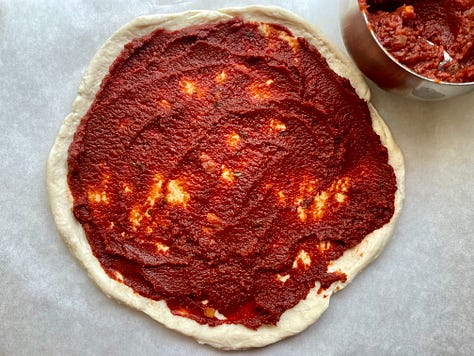
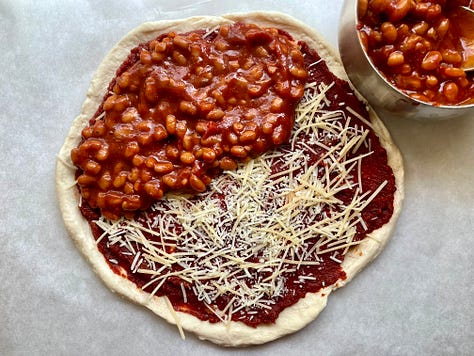

Plus, the amount of tomato paste pales in comparison to the amount of baked beans. Yikes!
Once all that mess was layered, I piled the mozzarella directly in the middle as instructed, for decoration. We don’t want any of those pesky, delicious, crispy cheesy bits around our pizza edge, no sir.
You bake this behemoth at 425 for 10 minutes and then 325 for another 20. I let it cool a bit to hopefully help encourage it to stay in one piece upon slicing, and it isn’t a total disaster, but potential eaters pick up a slice of this at their peril. As you can see in the header image, the biscuits are carefully designed to resist sticking together in the can, and so they also resist fully melding together even when pressed, but since they also expand, it’s really only the very edge of the crust where that matters.
It smells okay, but in a weird, industrial way. You know, like the 1950s.

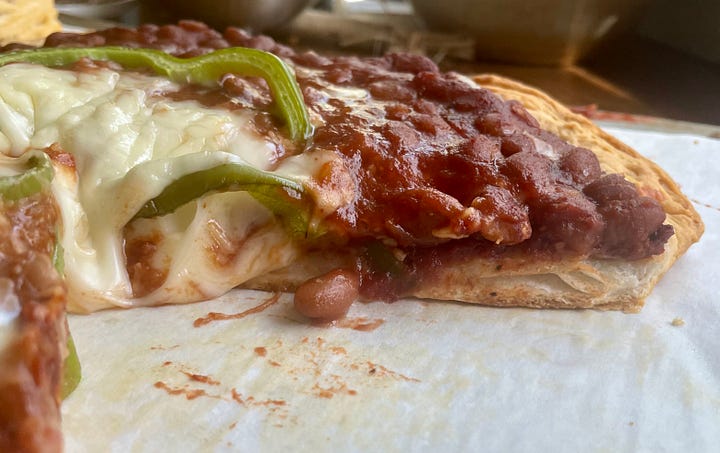
Well, it certainly does index that summer cookout appeal that I was hoping for when I was waxing optimistic up there, but unfortunately, it’s specifically a summer camp cafeteria vibe, especially if we’re talking one of the nights 1979 Meatballs Bill Murray was on kitchen duty. There is a heavy ketchup overtone from the metric ton of tomato paste. It is very, very salty. Although the crust actually holds sturdy enough to keep its shape after slicing, it’s a Pyrrhic victory, because of course all the toppings slide directly off onto the plate as soon as you try to lift it. A fork is critical to successful eating, but antithetical to successful pizza. The crust is also (no surprise here) flaky biscuit style, with no resemblance to a real, chewy, foldable slice. The cheese is all but undetectable, except for the first bite, which is approximately 100% cheese.
The best thing I can say about the Ann Page Baked Bean Pizza? It would be worse if you made it with Van Camp’s Beanee Weenee.
If you make this, and you shouldn’t, knock open a can of refrigerated pizza dough on the counter, cut WAY back on the tomato paste, and please, I beg you…spread the cheese love allllll the way to the edge, as God intended.
Need food first, picky eater-friendly, non-judgmental help with nutrition? You can schedule an appointment with me through Nourish here. I see lots of diabetes, neurodivergence, allergies and GI conditions, autoimmune and inflammatory disorders, and weight management whether for increase or decrease — adults, teens, and kids. We take most insurance, and most often, the copay is $0.
Zen and the Science of Candy Corn is a reader-supported publication that brings me great joy. You can literally give me your 2 cents with the tip jar button below!
Thanks so much for reading! But if you decided to subscribe, free or paid? Awesomesauce!
And feel free to share this post with any pineapple pizza-loving psychopaths you know.




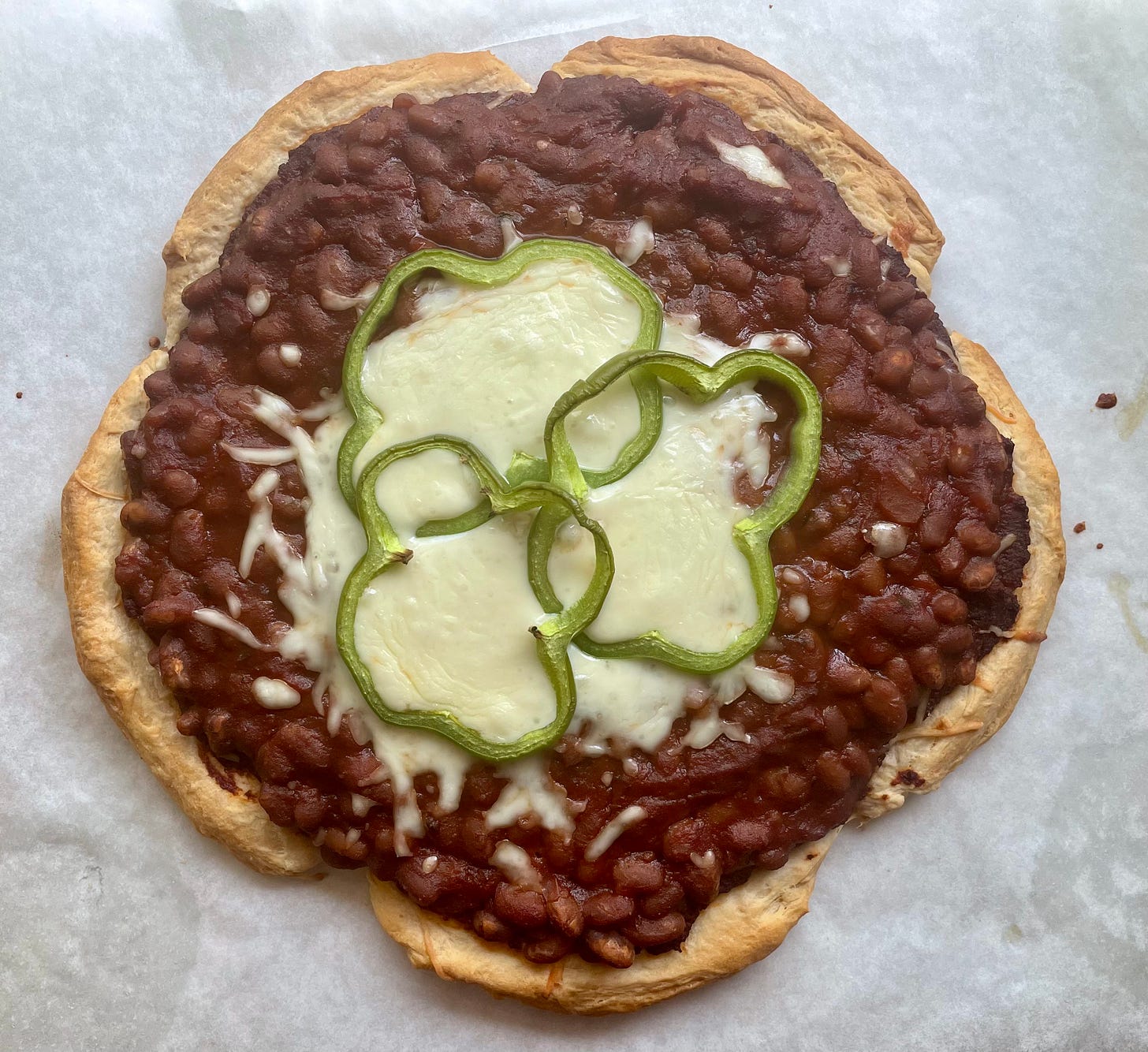
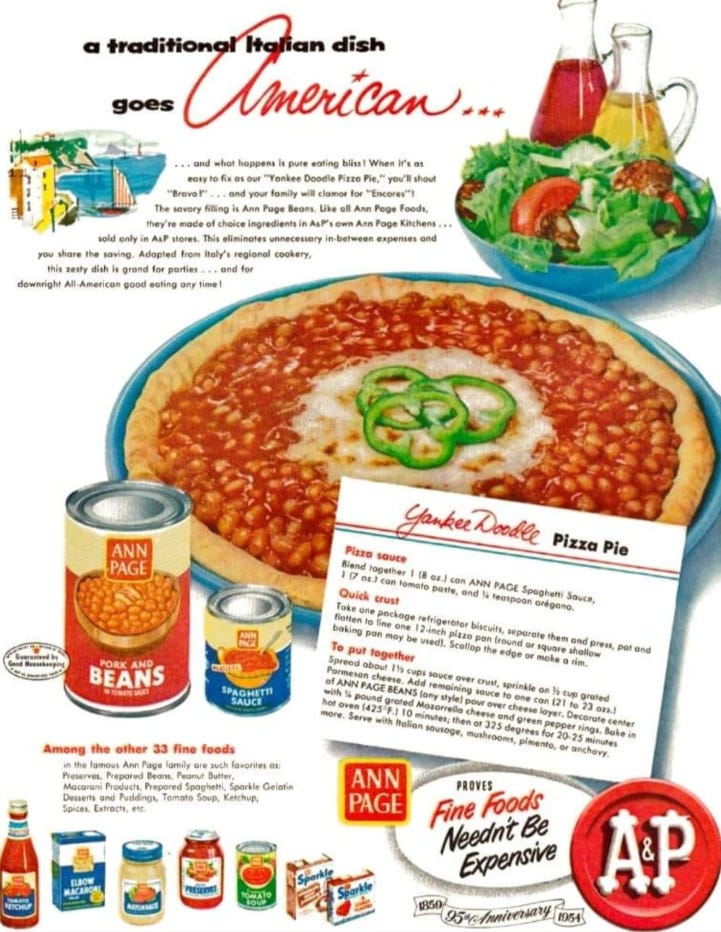
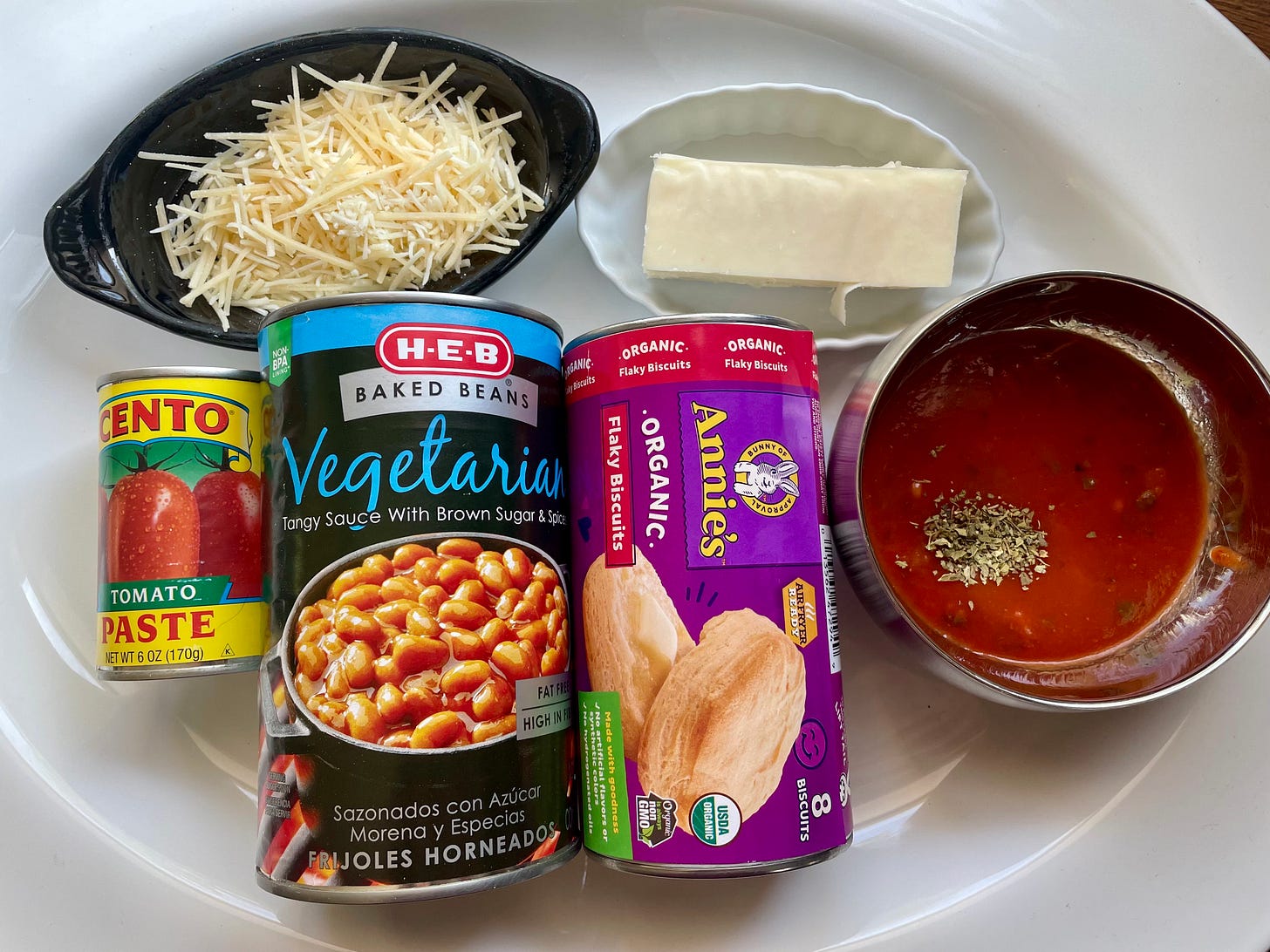

I can't believe you went there. I am impressed by your fortitude. The first time I saw that recipe, I had to put my head down and call for the eye bleach. Please don't make the spam shaped like a pineapple madness. I don't think even your formidable sanity would survive.
That looks nice